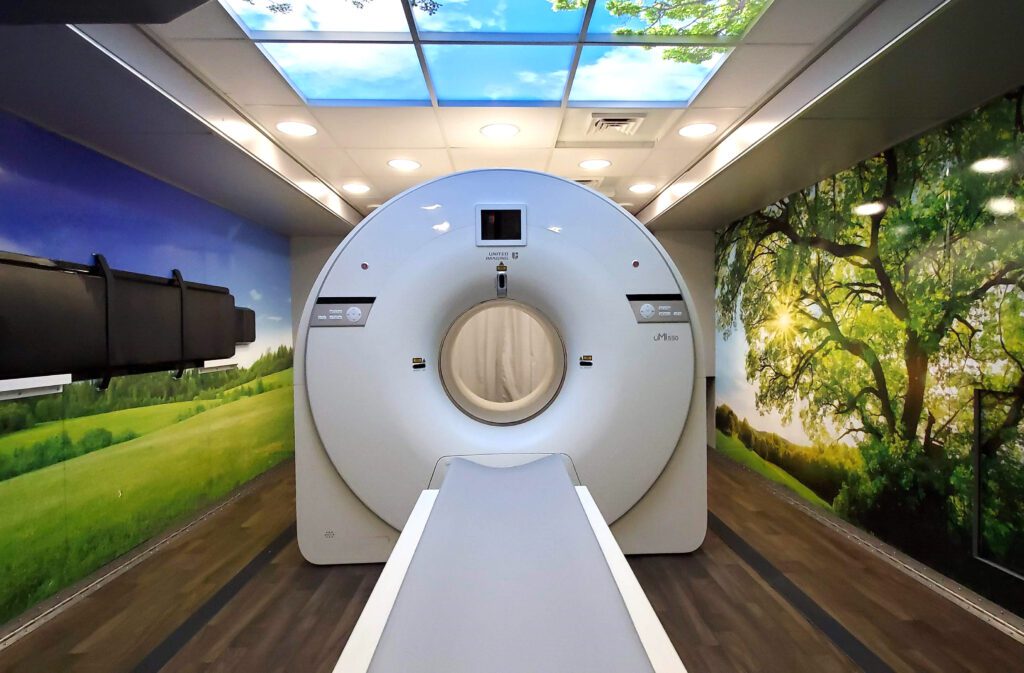What’s New in PET/CT
Metabolic parameters of sequential 18F-FDG PET/CT predict overall survival of esophageal cancer patients treated with (chemo-) radiation.
PET/CT Updates, Research & Education
April 2019
Purpose
To evaluate the prognostic value of metabolic parameters of pre-treatment and interim 18F-fluorodeoxyglucose (FDG) positron emission tomography (PET) for overall survival (OS) of esophageal cancer(EC) patients undergoing (chemo-) radiotherapy.
Methods
A retrospective analysis of 134 patients with pathology confirmed squamous cell EC treated between July 2009 and October 2013 in our hospital was performed. Inclusion criteria for this study were curative intended radiotherapy and availability of pre-treatment and interim 18F-FDG PET. 18F-FDG PET/CT scans were acquired before treatment and after 40 Gray (Gy) of radiotherapy. Maximum standard uptake value (SUVmax), metabolic tumor volume(MTV), total lesion glycolysis (TLG), and the percentual changes during both PET scans were recorded. The parameters were named as SUVmax1, MTV1, TLG1, SUVmax2, MTV2, TLG2, ΔSUVmax, ΔMTV and ΔTLG. The receiver operating characteristic curve (ROC) was used to analyze the relationship between metabolic parameters and OS, survival analysis was carried out by Kaplan-Meier and Cox regression analysis.
Results
Univariate survival analysis showed that SUVmax2, MTV1, ΔMTV, TLG1, TLG2 and ΔTLG were associated with OS. Based on the largest Youden index of ROC curves, patients with SUVmax2 < 7.8, MTV1 < 10.5, ΔMTV < 0.075, TLG1 < 59.8, TLG2 < 44.3 and ΔTLG < 0.27 tended to live longer. Stratified for these parameters, the estimated median survival time were 27.9 months (m) vs 9.8 m, 36.9 m vs 11.3 m, 41.6 m vs 12 m, 48.9 m vs 14.3 m, 32.6 m vs 13.2 m, and 41.6 m vs 14.5 m. Cox multi-factor regression analyses revealed SUVmax2 as an independent prognostic factor for OS complementary to TNM staging and the length of primary tumor.
Conclusion
Sequential 18F-FDG PET/CT metabolic parameters bear important prognostic value for OS of EC patients. 18F-FDG PET/CT scan before treatment and during chemoradiotherapy seems helpful to evaluate the effect of chemoradiotherapy, guide clinical decisions and provide patients with personalized treatment.
Source: Radiat Oncol. 2019 Feb 19;14(1):35. doi: 10.1186/s13014-019-1236-x.<https://www.ncbi.nlm.nih.gov/pubmed/30782182> Retrieved 29 March 2019.

April Esophageal Cancer Awareness
- Esophageal cancer is more common among men than women; the lifetime risk for men is about 1 in 132 while the lifetime risk for women is about 1 in 455
- It is estimated that there will be 17,650 new esophageal cancer diagnoses in 2019 in the US
- The 5 year survival rate has increased from about 5% in the 1970s to about 20% today, which can be attributed to advances in treatment
Connect with Us
Get additional information and stay up-to-date with the latest news by connecting with us on social media.



